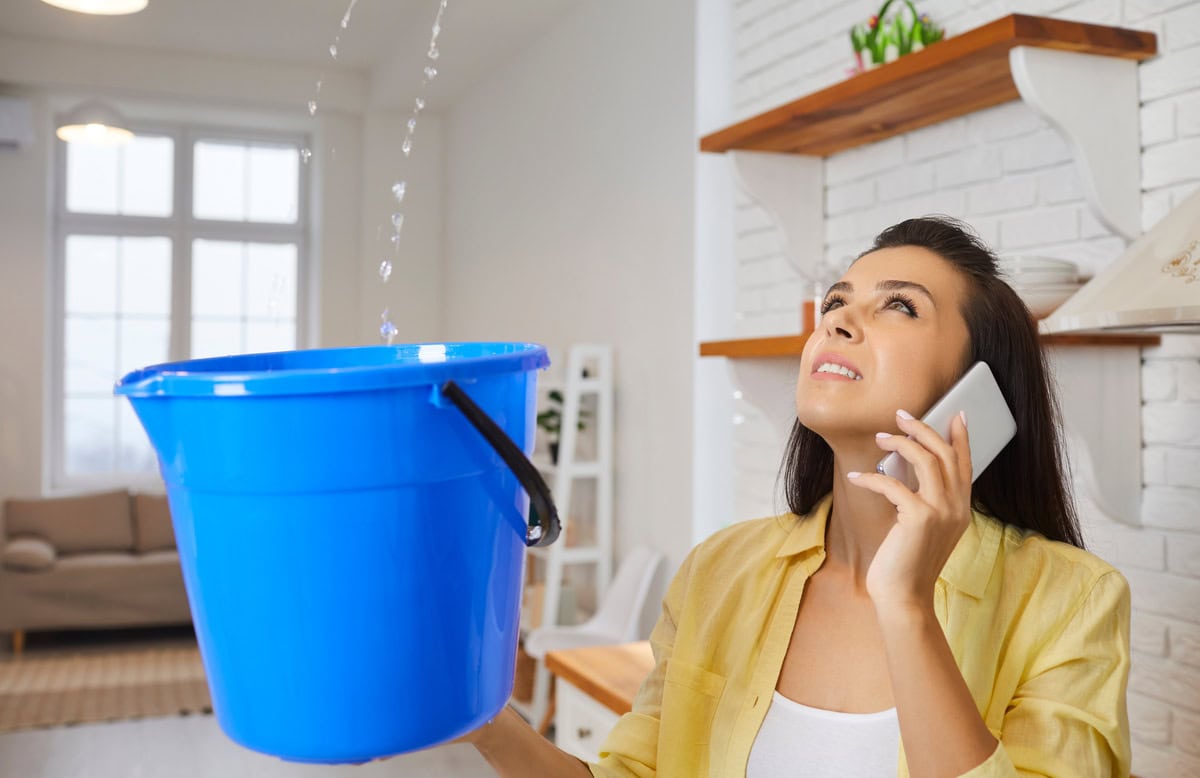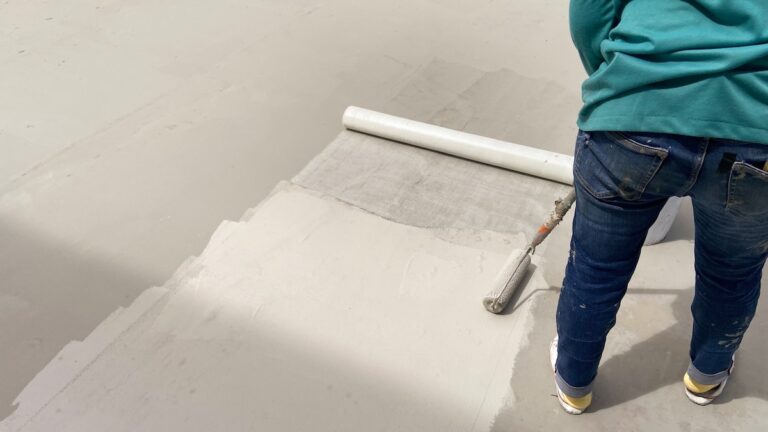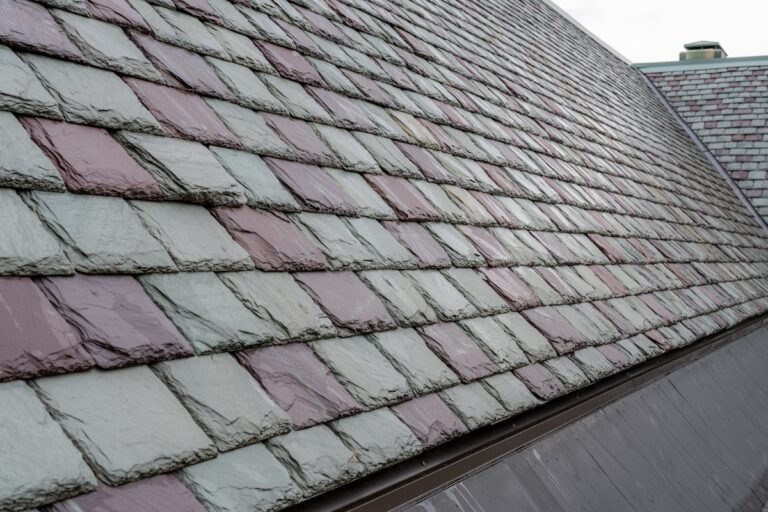A leaking roof is every homeowner’s nightmare. It not only compromises the integrity of your home but also poses potential risks to your health and safety. However…
- Understanding the signs
- Knowing what actions to take
- Having insight into repair options
…can alleviate stress and protect your property. We’ll cover all of that and more in this guide to roof leak repair!
Signs of a Roof Leak
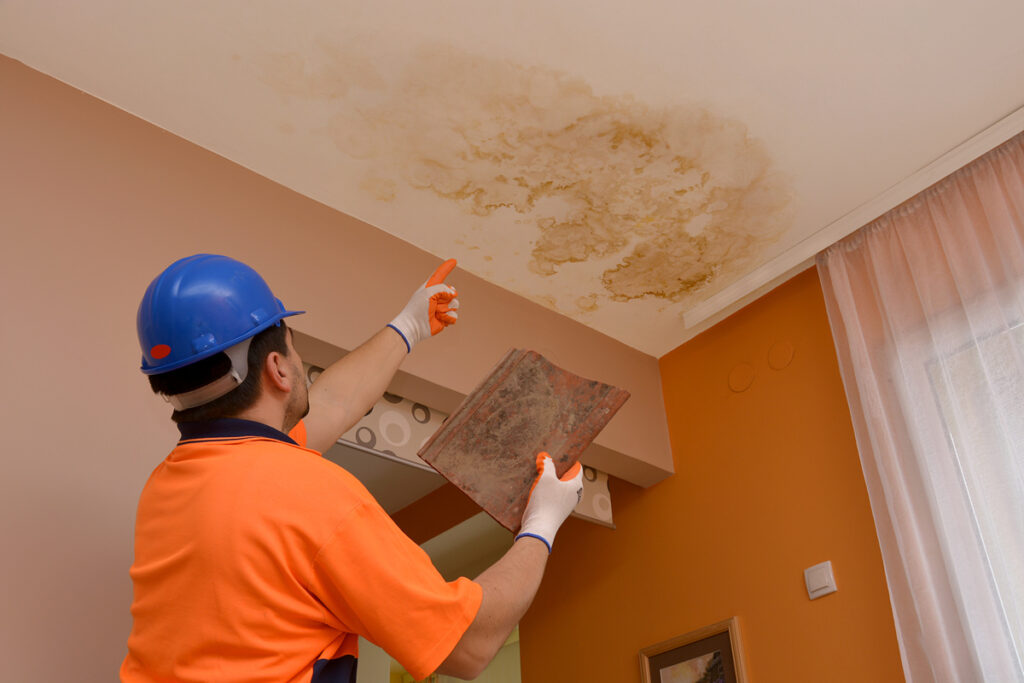
Detecting a roof leak early can save you from costly repairs and extensive damage. Here are some common signs to watch out for:
- Water Stains: Discolored patches on your ceiling or walls are telltale signs of water infiltration.
- Dripping Sounds: Hearing water dripping inside your home, especially during rainstorms, indicates a leak.
- Mold and Mildew: Presence of mold or mildew in your attic or on walls signifies excess moisture, often caused by leaks.
- Curling or Missing Shingles: Damaged or missing shingles create vulnerabilities in your roof, allowing water to seep through.
- Sagging Areas: A sagging roofline or soft spots on your roof suggest water damage and structural issues.
What to Do When You Spot a Roof Leak
Immediate action is crucial when you detect a roof leak to prevent further damage. Follow these steps:
- Contain the Leak: Place buckets or containers under the leak to catch dripping water and prevent it from spreading.
- Clear the Area: Remove any valuable items or furniture from the affected area to prevent water damage.
- Document the Damage: Take photos or videos of the leak and resulting damage for insurance purposes.
- Temporarily Patch the Leak: Use roofing tar or a waterproof sealant to temporarily seal the leak until professional repairs can be made.
- Contact a Professional Roofer: Schedule a thorough inspection and repair with a certified roofing contractor to address the issue promptly and effectively.
How to Repair a Roof Leak: 5 Simple Steps
Repairing a roof leak requires precision and expertise to ensure long-lasting results. Here’s a general outline of the repair process:
1) Inspection:
A professional roofer will conduct a comprehensive inspection to identify the source and extent of the leak.
2) Repair Planning:
Based on the assessment, the roofer will develop a repair plan tailored to address the specific issues affecting your roof.
3) Material Preparation:
Gather the necessary materials, including shingles, flashing, sealants, and any specialized equipment.
4) Leak Repair:
Execute the repair plan, which may involve replacing damaged shingles, resealing flashing, or patching holes.
5) Quality Assurance:
Conduct a final inspection to ensure that the repair effectively resolves the leak and restores the integrity of your roof.
Can You Repair a Roof Leak on Your Own?
While DIY roof repairs may seem tempting, they often pose risks and may lead to further damage if not done correctly. Factors to consider include:
- Skill Level: Roof repair requires specialized knowledge and skills, including proper safety procedures and handling of materials.
- Safety Concerns: Working at heights presents inherent risks, increasing the likelihood of accidents or injuries for inexperienced individuals.
- Warranty Implications: DIY repairs may void manufacturer warranties or insurance coverage, leaving you liable for future damage.
- Long-Term Effectiveness: Improper repairs may only provide temporary solutions, leading to recurring leaks and additional expenses down the line.
Professional Roof Leak Repair Cost
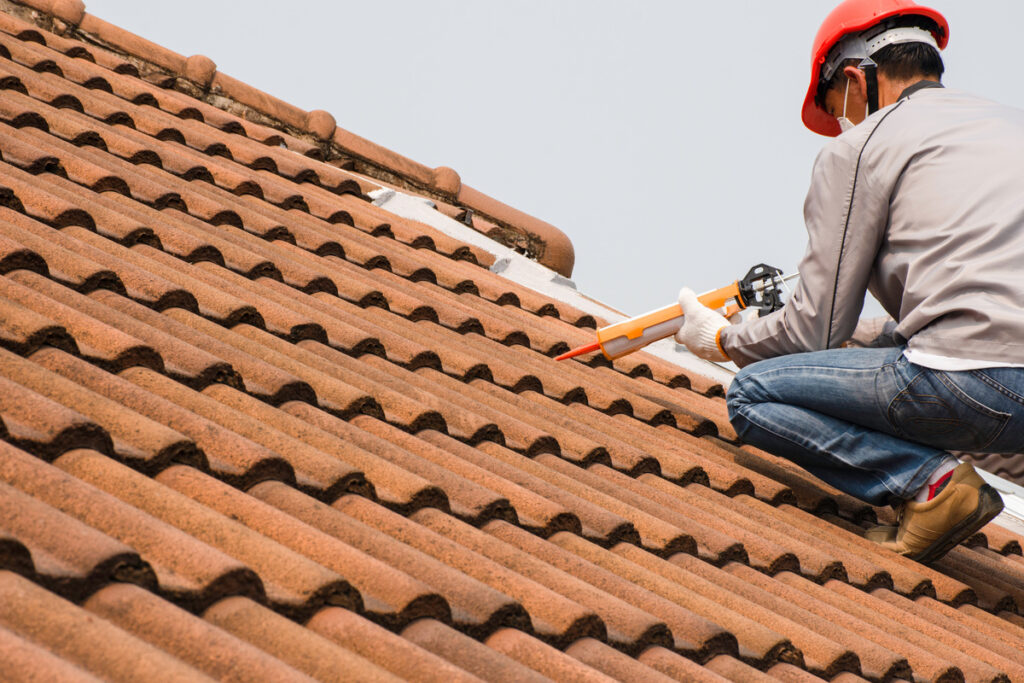
The cost of professional roof leak repair varies depending on factors such as the extent of damage, roof type, and location. On average, homeowners can expect to pay between $300 and $1,000 for minor repairs, while more extensive repairs or replacements may cost upwards of $3,000 to $5,000 or more. Investing in professional repairs ensures quality workmanship and long-term peace of mind.
How DIY Repairs Affect Your Warranty
Many roofing warranties include clauses that void coverage if repairs are performed by unauthorized individuals or if non-approved materials are used. DIY repairs may also result in improper installation, leading to further damage that isn’t covered by the warranty.
Before attempting any repairs yourself, review your warranty terms and consult with a professional roofer to avoid potential conflicts.
Preventing Roof Leaks
Prevention is key to avoiding costly roof repairs and preserving the lifespan of your roof. Follow these preventive measures to minimize the risk of leaks:
- Regular Maintenance: Schedule annual roof inspections and maintenance to identify and address potential issues before they escalate.
- Clean Gutters: Clear debris and leaves from gutters and downspouts to prevent water buildup and ensure proper drainage.
- Trim Overhanging Branches: Trim trees near your roof to prevent branches from rubbing against shingles or causing damage during storms.
- Seal Flashing: Inspect and reseal flashing around chimneys, vents, and skylights to prevent water infiltration.
- Invest in Quality Materials: Choose high-quality roofing materials and hire reputable contractors for installation to minimize the risk of leaks.
How Often Should You Inspect Your Roof for Leaks?
Regular roof inspections are essential for early leak detection and maintenance. Aim to inspect your roof at least twice a year, ideally in the spring and fall, and after severe weather events such as heavy rainfall or hailstorms. Additionally, schedule professional inspections every 3-5 years to assess the overall condition of your roof and address any potential issues proactively.
Professional Roof Repairs You Can Count On
A leaking roof can wreak havoc on your home and finances if left unchecked. Remember, when it comes to roof leak repair, prompt action and expert assistance are your best allies.
That’s where we come in. At Johnson Restoration, we’ll help you care for your roof through prompt and reliable repairs for your leaky roof! Contact us today to get started!
